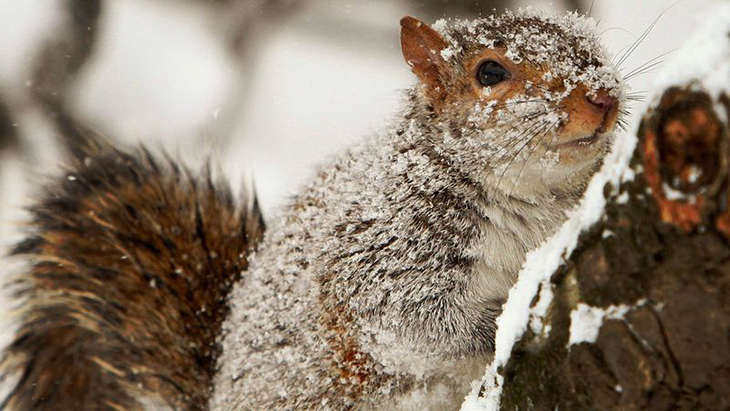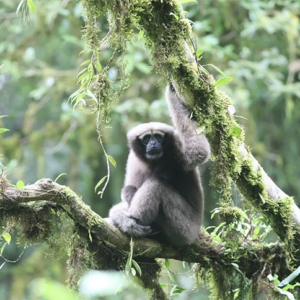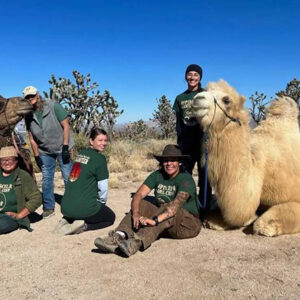
Astronauts are thought to be a form of elite club that have the benefit to see space. This is something that most people can afford. However, as glamorous as the job sounds, it’s actually far from that. Being able to travel to space is no easy feat. This requires hours of training and tons of studying. More importantly, many of the astronauts working for NASA won’t even see what’s beyond.
As for space travel itself, a lot of thought of planning go into it. What would their suit be made of? What is their diet going to look like? What are the safety precautions they need to take? Hence, scientists and researchers have looked into animal behavior that may help these space travelers. One creature they’re studying right now is the wintering squirrel.
It’s a known fact that bears and ground squirrels hibernate during winter. This means that they stop eating until spring comes. Their body’s nutrients rely simply on the fat reserves they’ve stored up when they were awake. Oftentimes, this type of prolonged fasting and inactivity significantly reduces the mass and function of the human muscle. When it comes to hibernators, this isn’t a problem at all. How they do it is a mystery that researchers want to solve.
At the Université de Montréal, a biologist has figured out why. This means that his findings could have implications for future of space travel. What he did was study a 13-lined ground squirrel that lives abundantly in North America. Matthew Regan has confirmed a theory he calls “urea nitrogen salvage,” and this dates way back to the 1980s.
This theorizes that hibernators harness a metabolic trick of their gut microbes so that they are able to recycle the nitrogen that is found in the urea. As for the nitrogen itself, this is a waste compound that is oftentimes excreted by the body as urine. However, they want to see if this can build new tissue proteins. The question now is, how could this discovery be used in space travel? Theoretically, Regan posits, by aiding these astronauts when it comes to minimizing their own muscle-loss problems caused by microgravity-induced suppression of protein synthesis, would they be able to reduce nitrogen production and excretion through intense exercises?
There must be a method that helps augment the astronauts’ muscle protein synthesis processes using urea nitrogen salvage. By doing so, they may be able to achieve better muscle health especially when they are commissioned for long voyages into deep space in a spacecraft that is too small to fit the conventional exercise equipment. Can this be done?
“Because we know which muscle proteins are suppressed during spaceflight, we can compare these proteins with those that are enhanced by urea nitrogen salvage during hibernation,” shared Regan. He carried out this research while a postdoc at the University of Wisconsin-Madison.
He is now continuing this work. He is also doing this via a Canadian Space Agency research grant at UdeM. This was where he took up a position as assistant professor of animal physiology in the Department of Biological Sciences in the last year.
Regan added, “If there is an overlap between the proteins in spaceflight and the ones from hibernation, then it suggests this process may have benefits to muscle health during spaceflight.”
The Prototype Hibernator
In order to pull off the research, Regan designed a series of techniques and experiments to look into the major steps in the urea salvage process and provide proof for whether or not they occur in the 13-lined ground squirrel during the winter hibernation time.
In order to pull the hypothesis off, they worked in the lab where they injected their test squirrels’ blood with “double-labeled” urea. This meant that the urea’s carbon atom was 13C instead of the usual 12C, and its nitrogen atoms were 15N instead of the usual 14N. They labeled these, which enabled them to track the urea-sourced carbon and nitrogen as it went through the many steps of the urea nitrogen salvage process.
They discovered that the process led from the initial transport of urea from the blood into the gut, to the breakdown of urea into its component parts by gut microbes, to the flow of substances, which is called metabolites, containing urea nitrogen as it went back into the squirrel until the urea nitrogen in tissue protein finally came to be.
“Essentially, seeing 13C and/or 15N in metabolites at these various steps indicated that they originated from urea, and thus, that the hibernator was using urea nitrogen salvage,” said Regan. He did the study on squirrels with and without gut microbiomes and at three times of the year. First, he did it during summer when they led active lives and were awake. Then he studied them during early winter when they were into fasting and hibernation for more or less a month. Lastly, he studied them in late winter when they were four months in the fasting and hibernation process.
‘Clear evidence of nitrogen salvage’
They discovered something definitive, and it was that at each step of the process, there was clear evidence of urea nitrogen salvage as seen by the squirrels with intact gut microbiomes. As for those with depleted gut microbiomes, these squirrels displayed no evidence of urea nitrogen salvage at any time during the process. They were able to say that the process was entirely dependent on the gut microbes’ ability to degrade urea. More importantly, it’s also good to note that this is something that the squirrels are unable to do on their own.
Regan and his team also came up with two more important findings:
- The first is that the incorporation of urea nitrogen into the tissue protein of the squirrels was at its peak during late winter. This somehow alludes that the urea nitrogen salvage becomes more active deeper into the hibernation process. This is not similar to most physiological processes during hibernation, when tend to be significantly reduced.
- The other finding was that there was evidence the microbes themselves were utilizing the urea nitrogen to build its own set of new proteins. This is most helpful for them because they, like the squirrel, are under the same conditions of fasting hibernation. Hence, they were able to conclude that, both the squirrel and its microbes benefit from urea nitrogen salvage. This means that the process a symbiosis at its most genuine form.
Regan said that this meant something. He said that the squirrels emerge from hibernation in the spring maintaining their health. This is also vital because the year’s only mating season, which is a time of intense physical activity for both the males and females species, happens right after they come out from hibernation. Tissue function, specifically the muscle tissue function, is extremely important for them to successfully mate.
“By facilitating muscle protein synthesis late in the hibernation season, urea nitrogen salvage may help optimize the emerging squirrels’ muscle function and contribute to their reproductive success during the mating season,” said Regan. “Urea nitrogen salvage may therefore enhance the animals’ overall biological fitness.”
The Starving Masses and The Elderly Population
More than what this means for space travel and for the health of astronauts, Regan’s discovery also have direct impact on life on Earth, particularly in the underdeveloped countries where most starving people are, and, of course, with the elderly folks.
Millions upon millions of people all over the world experience muscle wasting because of a variety of reasons. In the case of undernourishment, for instance, this problem affects over 805 million people worldwide. What is more prevalent in a country such as Canada is sarcopenia. This an age-related decline in muscle mass stemming from anabolic insensitivity. This affects everyone as it leads to a 30 to 50 percent decline in skeletal muscle mass as long as they reach ages 40 to 80.
“The mechanisms that mammals like the 13-lined ground squirrel have naturally evolved to maintain protein balance in their own nitrogen-limited situations may inform strategies for maximizing the health of other nitrogen-limited animals, including humans,” shared Regan. One possible answer to this problem might be to the development of a pre- or probiotic pill that could be aid in the promotion of a gut microbiome, one that hibernators such as wintering squirrels have.
“To be clear, these applications, though theoretically possible, are a long way from delivery, and a lot of additional work is needed to translate this naturally evolved mechanism safely and effectively to humans,” Regan said. He also added, “But one thing I find encouraging is that a study from the early 1990s provided some evidence that humans are capable of recycling small amounts of urea nitrogen via this same process. This suggests that the necessary machinery is in place. It just needs to be optimized.”
What are your thoughts? Please comment below and share this news!
True Activist / Report a typo


